Nissan’s most important model of 2022 isn’t the new Z sports car or even the Navara ute, we’d argue it’s the Qashqai small SUV.
Competing against the likes of the Mazda CX-30, Kia Seltos and Hyundai Kona in one of the hottest segments in Australia, the Qashqai has the potential to sell in big numbers.
Just think about it, when was the last time you went to the shops and didn’t see a small SUV?
The Qashqai also represents the vanguard for a new Nissan, as the first of four all-new models due in Australian showrooms over the next 12-18 months, and will be followed by the aforementioned Z, as well as the X-Trail, Pathfinder and probably the Ariya EV.
So, instead of waiting for this car to come to us, we thought we’d take a trip across the world to see if it lives up to the hype.
Nissan Qashqai 2022: ST
| Engine Type | Inline 4, 2.0L |
|---|---|
| Fuel Type | Unleaded Petrol |
| Fuel Efficiency | 6.9L/100km (combined) |
| Seating | 5 |
| Price From | $25,190 - $31,130 |
| Safety Rating |
|
Does it represent good value for the price? What features does it come with?
7 / 10
How much will this new Qashqai cost when it lands in Australian showrooms?
Right now, no one but Nissan Australia knows for sure, but we can make a few educated guesses.
The current line-up starts at $28,590, before on-road costs, but that’s for the entry-level manual, which will no longer be offered with this new-generation Qashqai.
That means pricing could jump up to around $34,000, and could stretch all the way to about $44,000, spread over four grades – the ST, ST+, ST-L and Ti.
But buyers will be compensated with a long list of standard kit that comes with the new Qashqai.

Standard equipment on the 2022 Qashqai includes 17-inch alloy wheels, LED headlights, a 7.0-inch digital instrument display, cloth interior, push-button start, and an 8.0-inch multimedia colour touchscreen with Apple CarPlay and Android Auto compatibility.
Stepping up to the ST+ adds 18-wheel wheels, rain-sensing wipers, LED fog lamps and a 9.0-inch multimedia unit with wireless Apple CarPlay and satellite navigation.
Buyers opting for the ST-L will be treated to 19-inch wheels, dual-zone climate control, part-leather seat trim, a wireless smartphone charger, a power-adjustable driver’s seat, heated front seats, a heated steering wheel and auto high beam.
But the top-of-the-range 2022 Qashqai, known as the Ti, similar to the one we have on test, scores all the fruit, adding a panoramic glass roof, powered tailgate, leather interior, massive 12.3-inch digital instrument cluster, a 10.8-inch head-up display and a 10-speaker Bose sound system.
The most expensive variant of the Qashqai basically has everything you’d want in a new car in 2022, but it’s great to see even entry-level Qashqais still get important tech like smartphone mirroring.

Is there anything interesting about its design?
9 / 10
Can you believe Nissan’s second-generation Qashqai has been on sale in Australia since 2014?
And after eight years, the small SUV has received a nip here and a tuck there to keep things fresh. But let’s be honest, this new-generation model is exactly what the doctor ordered.
It looks sleek, modern and confident while retaining that familiar Nissan DNA, and is now a genuine rival to head-turning SUVs like the Mitsubishi Eclipse Cross and Peugeot 2008.
The first thing you’ll notice at the front is the new 'V-motion' front grille, which blends together with boomerang-shaped headlights and daytime running lights.
You’ve also got the bonnet lines feeding right into the grille and a heavily sculpted bumper that combine for a sharp and angular face.

In profile, the high hip line makes the Qashqai look much taller and more substantial than its small SUV size would indicate.
A door scallop also breaks up the huge expanse of metal, while Nissan has kept the black plastic wheelarch cladding to a minimum for a more upmarket look.
This test car’s two-tone paint finish, mixing what Nissan calls 'Fuji Red Sunset' with a contrasting black roof, is also particularly eye catching, while optional 20-inch wheels are fitted.
In the rear, the Qashqai sports a roof-mounted rear spoiler which is reminiscent of a baseball cap being worn backwards.
The chunky rear bumper with a contrasting element makes the Qashqai look a little more rugged, while the new Nissan models also sports the latest automotive design trend of proudly spelling its name with individual lettering across the tailgate.

One of the areas that let the old Qashqai down, especially in the last few years, was its dated cabin design. So, we’re happy to report the new version brings this space well and truly into 2022.
A large part of this is due to the new floating-style multimedia touchscreen system, which cleans up the whole centre stack and looks more Nintendo Switch than Nintendo Gameboy.
The all-digital instrument cluster is also a welcome sight, and features clear, concise and customisable readouts.
Nissan has also lifted the cabin atmosphere with the use of soft-touch blue leather on the dashboard, doors and transmission tunnel, at least in this high-grade variant, and the overall feeling in inside is of modernity and style.
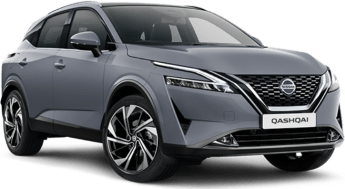
How practical is the space inside?
10 / 10
Though the Qashqai is classed as a small SUV, it genuinely feels like there is enough room inside to rival some cars a size above.
Part of the reason is the new Qashqai has grown in all dimensions, affording front and rear occupants more space.
The new Qashqai measures 4425mm long, 1835mm wide, 1625mm tall and features a 2665mm wheelbase.

In the front row, there is heaps of head-, shoulder- and legroom, while the seats and steering wheel offer plenty of adjustability for all shapes and sizes.
Storage options range from a bottle-swallowing door bin, two large cupholders, a wireless smartphone tray, and a deep, two-tiered, underarm cubby.
However, it’s in the second row where the Qashqai’s expanded size really makes a difference, especially in legroom.
Head-, and shoulder-room are substantial, too, even in the middle seat, while ISOFIX points means even babies can enjoy the ambiance.

Here you’ll find door pockets that will happily swallow a large bottle, a fold-down armrest with cupholders, map pockets, air vents and charging ports.
Boot space measures a sizeable 504 litres – up a massive 74L over the previous model – thanks to a lower boot floor that also features customisable floorboards.
Stow the split-fold 60/40 second-row seats down, and space swells to 1593L – plenty of room for Ikea furniture, pets or a big-screen TV.
What are the key stats for the engine and transmission?
8 / 10
Powering this Qashqai is a 1.3-litre turbo-petrol four-cylinder with 12-volt mild-hybrid technology, outputting 116kW and 270Nm.
With drive sent to the front wheels via a continuously variable transmission, or CVT, this Qashqai can accelerate from 0-100km/h in 9.2 seconds.
Look, it’s not blisteringly quick, but it isn’t trying to be. This engine and transmission get the job done.
Australian cars however, won’t be getting this particular engine.
All Australian Qashqais at launch will be equipped with a 1.3-litre turbo-petrol engine sans the mild-hybrid technology, with outputs pegged at 110kW/250Nm.

Though figures are down compared with overseas models, the 2022 Qashqai does produce 4kW and 50Nm more than the outgoing model, which used a 2.0-litre, naturally aspirated engine.
However, the new Qashqai still lags behind rivals like the 130kW/265Nm 1.6-litre-equipped Kia Seltos and 139kW/252Nm 2.5-litre-equipped Mazda CX-30.
All Aussie cars will also be front-wheel drive and fitted with a CVT as the base six-speed manual has been discontinued.
Nissan has also confirmed an e-Power variant that will launch in late 2022, which uses a 1.5-litre petrol engine to charge a lithium-ion battery and an electric motor that drives the wheels.
Total outputs in the e-Power grade will be 140kW/330Nm, so those wanting a bit more performance in the new Qashqai might want to wait.
How much fuel does it consume?
8 / 10
Official fuel consumption figures for this Nissan Qashqai are pegged at 6.4 litres per 100km, while our time with the car yielded a figure of 7.3L/100km covering a healthy mix of inner-city, freeway and country driving.
This is despite the 12-volt mild-hybrid tech that powers the Qashqai’s electrical systems at low speeds, which Nissan says reduces engine running time, and therefore, fuel consumption.
To be fair, our driving skewed more heavily towards country and freeway trips, so if we stayed in the inner city a little longer, our fuel consumption average might be a bit lower.
Strangely, Australian Qashqai’s without the mild-hybrid tech boast an even lower fuel consumption average of 6.1L/100km, but we’ll have to wait to drive one on local soil to see how accurate that claim is.
Warranty & Safety Rating
What safety equipment is fitted? What safety rating?
9 / 10
The 2022 Nissan Qashqai has not been tested by ANCAP, but was awarded a maximum five-star rating from Euro NCAP in 2021.
It scored highly in the adult and child occupant protection tests with a 91 per cent result, but truly excelled in the safety assist category.
The Qashqai’s 95 per cent score in the safety assist assessment is the highest recorded by Euro NCAP, matching the Subaru Outback and Volvo XC60, and exceeding the likes of the Hyundai Ioniq 5, Toyota Yaris Cross and Tesla Model X in that particular test.
Luckily, Nissan Australia has locked in standard safety gear for local cars, and the list is long and comprehensive, including autonomous emergency braking (AEB), adaptive cruise control, forward collision warning, rear AEB, lane departure warning, blind-spot monitoring, rear cross-traffic alert, traffic sign recognition, driver attention alert, automatic high beams, front and rear parking sensors, and a reversing camera.

In fact, so extensive is the standard list of safety equipment, only automatic wipers, a surround-view monitor and lane-keep assist are added from the ST+ up.
Nissan’s 'ProPilot' driving assist system is also available to all variants baring the entry-level ST, which allows the Qashqai to accelerate to speed, slow down to a stop and stay in lane under certain conditions.
Having experienced the ProPilot tech on a freeway setting, we can say that the system is excellent, able to gently slow down and seamlessly match the speed of vehicles in front while keeping the car dead centre in lane.
It’s one of the best implementations of this level of driving assistance tech we’ve experienced thus far in a real-world setting.
What does it cost to own? What warranty is offered?
9 / 10
Like all new Nissan’s sold in Australia, the 2022 Qashqai comes with a five-year/unlimited kilometre warranty with roadside assist over that period.
This matches the assurance period offered by most top 10 brands, including Toyota, Mazda and Hyundai, but falls short of the benchmark 10 years on offer from Mitsubishi and the seven years available from Kia.
Scheduled service intervals are every 12 months or 10,000km, whichever occurs first, but Nissan is yet to reveal pricing.
However, there will be capped-price servicing for the new Qashqai.
For context, each service for the outgoing car costs an average of around $300.
What's it like to drive?
8 / 10
The new-generation Qashqai represents Nissan turning over a new Leaf (pun intended) and nowhere is this more evident than from the driver’s seat.
For a small SUV the old model was fun to drive, but let down immensely by a dated powertrain.
This new engine fixes some of the problems, and thankfully makes use of a turbocharger for a big boost in torque that is available much sooner in the rev range.
The result is a punchier-feeling car, especially around town, and it makes moving about in traffic feel that much snappier and more enjoyable.
We’re also happy to report that Nissan has retuned the CVT, making it feel much more organic and natural than it did before. But there's still a bit of lag off the line and a rubbery feel when pushing the Qashqai hard.

All Australian models feature a multi-link rear suspension set-up (yes!) and the Qashqai is well-tuned to soak up small bumps, while also offering plenty of feedback to the driver.
The steering can stray a little to the numb side, but it's never vague, and the lightness is an advantage when manoeuvring around town.
Overall, everything just feels nice, predictable and unintimidating – exactly what you want out of a small SUV like the Nissan Qashqai.
The new multimedia system is also super responsive, and is displayed on a much larger screen than before.
This means there is less lag when using things like the satellite navigation, and retention of physical buttons for the climate controls is a plus.

The massive glasshouse also means great visibility all around, while the panoramic glass roof is just plain awesome, especially when exploring country back roads.
Of note, though, road and wind noise can stray towards the ‘too loud and annoying’ side of things. But this only happens at freeway speeds and on coarse road surfaces, and could be an effect of our test car’s 20-inch wheels.
It will be interesting to see how much different the engine found in Australian models will be compared to this one with mild-hybrid tech.
Overall, though, this new-gen Qashqai is not only a clear step up over the old one, but a genuine rival to something like the Kia Seltos or Mazda CX-30.
Verdict
Forget the Z, GT-R, Leaf or Juke, we reckon the 2022 Qashqai perfectly encapsulates the new Nissan.
Its styling is bold and confident, it’s driving dynamics are objectively good, and it sets a new high watermark for what customers should expect from standard safety equipment.
The missing piece of the puzzle is, of course, pricing, but if Nissan can keep the asking price relatively affordable, the Qashqai could be Australia’s new small SUV yardstick.
Pricing Guides











.jpg)


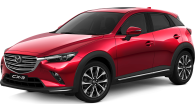
















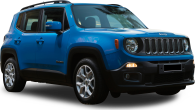









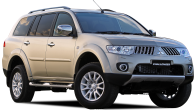


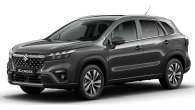

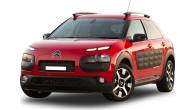




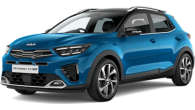


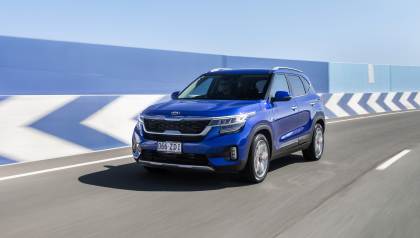


.jpg)

.jpg)
.jpg)